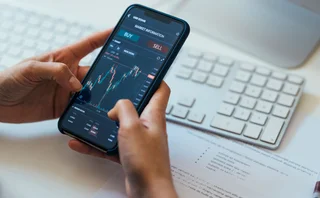
Trump’s FX impact: a tale of two terms
Traders say Trump version 2.0 is already proving a much trickier task to manage than the original, and have had to adapt
One question we’ve been discussing on the reporting desk lately is the difference between US president Donald Trump’s impact on the foreign exchange markets in his current term compared with his first.
Take yourself back eight years and there are some parallels. For example, Trump’s frequent, unpredictable tweets about US trade policy with China in his first term caused several fluctuations in the US dollar/offshore Chinese renminbi exchange rate.
There was also geopolitical turbulence from US foreign policy, such as the missile strike that killed Iranian military commander Qasem Soleimani at the beginning of 2020, sparking concerns of a wider conflict in the Middle East.
But comparing FX volatility during his two terms, taking the Covid-19 pandemic aside, and some stark differences are apparent.
Banks may have to rely more on adaptive market-making tools if these unpredictable market events persist
Before 2020, years of co-ordinated low interest rates across G10 markets and limited interest in carry trades led to record-low volatility, with significantly less leverage being deployed in FX markets. And even given some of the unpredictable tweets from Trump, volatility was structurally suppressed.
Fast-forward to the present and market conditions are significantly different. The ‘liberation day’ tariff announcements and the subsequent impact on US assets have flipped long-established correlations on their heads. In addition, volatility materially blew out, impacting spreads and liquidity.
Since then, the frequent nature of Trump’s unpredictable social media posts regarding tariffs, the Middle East, and even Fed chair Jerome Powell, have led to exchange rates being incredibly jittery when reacting to the headlines.
When rumours that Trump would fire Jerome Powell begun to circle in mid-July, euro/US dollar spot jumped 1.5% in just 30 minutes. And when those rumours were quashed later that day, the exchange rate reversed all gains as if nothing had happened.
This kind of intraday volatility is an increasing challenge that electronic FX market-makers will have to deal with for the next few years.
Traders privately say it’s much tricker dealing with Trump 2.0, given he now knows how better to wield the levers of power, but doesn’t always follow through on comments. So rather than reacting to headline news, they are reacting to market activity. During the Powell episode in July, some dealers saw volumes jump sixfold in that half-hour period. It’s an opportune time to not only prove their worth to clients in these events, but also to make profit in their spreads.
This is where machine learning and large language models could become vital, scanning market data, news headlines, liquidity and top-of-book spreads to recalibrate pricing, ensuring that they widen spreads when volatility spikes and also contract when it comes back down.
Furthermore, whereas pricing algorithms can pre-determine spreads for fixed events like central bank meetings or data releasees, banks may have to rely more on adaptive market-making tools if these unpredictable market events persist. These algorithms can detect intraday volatility on the fly and the adaptive market-making engine would kick in to adjust spreads accordingly.
But not all tier-two and tier-three regional banks that have stepped into electronic market-making will have these adaptive tools. The consequence could be LPs stepping out of the market when volatility spikes and potentially making FX trading even more jumpy.
While there is more certainty around tariffs, e-FX desks may have to stay on their toes for the foreseeable future.
Editing by Lukas Becker
Only users who have a paid subscription or are part of a corporate subscription are able to print or copy content.
To access these options, along with all other subscription benefits, please contact info@fx-markets.com or view our subscription options here: https://subscriptions.fx-markets.com
You are currently unable to print this content. Please contact info@fx-markets.com to find out more.
You are currently unable to copy this content. Please contact info@fx-markets.com to find out more.
Copyright Infopro Digital Limited. All rights reserved.
As outlined in our terms and conditions, https://www.infopro-digital.com/terms-and-conditions/subscriptions/ (point 2.4), printing is limited to a single copy.
If you would like to purchase additional rights please email info@fx-markets.com
Copyright Infopro Digital Limited. All rights reserved.
You may share this content using our article tools. As outlined in our terms and conditions, https://www.infopro-digital.com/terms-and-conditions/subscriptions/ (clause 2.4), an Authorised User may only make one copy of the materials for their own personal use. You must also comply with the restrictions in clause 2.5.
If you would like to purchase additional rights please email info@fx-markets.com
More on Our take
Turn of the skew: FX options dealers balance fragile market
Calls-versus-puts demand flips wildly in response to geopolitical events
Banks seek to advance predictive pricing models
AI and machine learning-based tools could give FX desks the power to forecast currency movements
FX traders revel in March Madness
Chaotic Trump policies finally bring diversity to flows – to the delight of market-makers
Could LPs explore renting out their client franchise?
Connecting regional banks with sophisticated clients may see dealers evolve to become liquidity distribution hubs
Higher rates see corporates reassess FX structured products
Treasurers are getting a taste for dual currency notes and structured forwards
Quants dive into FX fixing windows debate
Longer fixing windows benefit clients, but predicting how dealers will respond is tough
Low FX vol regime fuels exotics expansion
Interest is growing in the products as a way to squeeze juice out of a flat market
BofA quants propose new model for when to hold, when to sell
Closed-form formula helps market-makers optimise exit strategies








